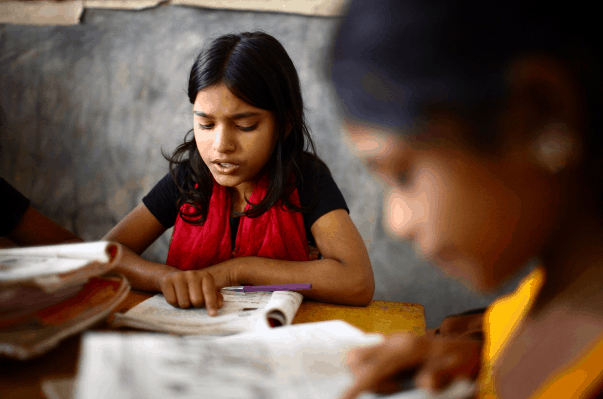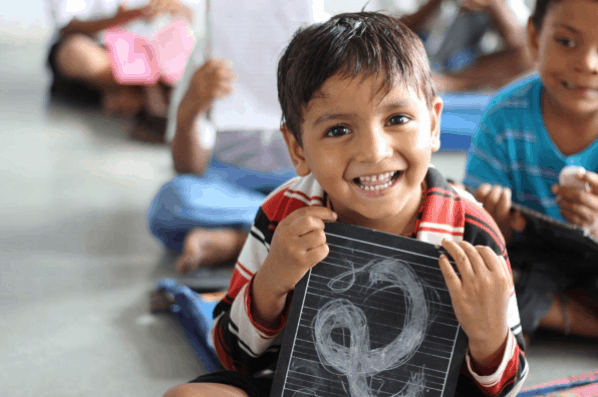Co-Author: Anh Nguyen
Education is a social cause that deeply resonates with many AVPN members. Discussions at the AVPN Conference in Bangkok highlighted pertinent factors that contribute towards desired educational outcomes across Asia, chief of which include:
- the need to consider both the entire educational value chain and the local context,
- an emphasis on the access to quality education, and
- the need for effective partnerships and coordination of outcomes between government, social investors and social purpose organisations (SPOs).
In the context of India, while enrolment has significantly gone up with the implementation of the Sarva Shiksha Abhiyan and the Right to Education Act, challenges remain across the value chain.
Overview of Pertinent Gaps in Education Landscape in India
At the primary school level, about 3.7 million children are still out of school. Low attainment levels continue to persist at the primary level and exacerbate as the child progresses through the school system. An estimated 250 million primary school children in India lack basic reading, writing and numeracy skills.
Another critical challenge facing the Indian education system is the lack of qualified teachers. In 2016, only 12% of teachers passed the Central Teacher Eligibility Test for the primary level, indicating an acute shortage of teachers. Teacher training and support remain inadequate with only 17% in rural areas and 8.3% in urban areas receive in-service training.
Gender disparity widens the educational gaps. Out-of-school rates for girls exceed those for boys between 10-14 years of age and this inequality worsens for the 15-16 age group. Children with special needs also face formidable challenges in accessing quality education. Around 28% of these children are out of school, ten times as much as the national average. Girls with disabilities experience double discrimination – there were about 347,700 more boys with disabilities enrolled than girls at the primary level as of 2016.
So, how can investors leverage these challenges and strategically invest in social purpose organisations (SPOs)?
In partnership with Credit Suisse and Sattva, we addressed this question in two parts. First, we analysed the demand side of social issues, interventions, and SPOs, which includes non-profits, social enterprises and hybrids. Then, we examined how the government and social investors empower these interventions to scale with impact.
We found an array of interventions implemented in different life stages of a student. Examples include enrolment drives (Educate Girls), nutrition improvement (Akshayapatra), bridge courses (Pratham), teacher trainings (Azim Premji Foundation, STIR, Dream a Dream, Jai Vakeel Foundation), school management reforms (Kaivalya), remedial learning (Adharshila Shiksha Samiti), life skills programme (Magic Bus), skills development (Samarthanam Trust), vocationalisation (LabourNet) and specialised care (Ummeed).
On the supply side, a spectrum of social investors active across different stages of education is evident – ranging from corporates (e.g. Credit Suisse, DS Group, Mahindra Group), local and global foundations (e.g. Edelgive Foundation, Central Square Foundation, MacArthur Foundation, Michael and Susan Dell Foundation) to impact funds (e.g. Kaizen, LGT Impact Ventures, Acumen).
Involving the entire ecosystem to scale effective solutions
Complementing the government’s efforts, the rise of private investors opens up opportunities for furthering effective interventions. While grant-funding remains the dominant financing instrument, equity investments have also been made into affordable private schools, vocationalisation of secondary schools and ed-tech.
Both of these exist in an ecosystem, where funders can maximise impact. The Indian Educational Investment Fund launched by Michael and Susan Dell Foundation, for instance, seeks to support educational entrepreneurs in collaboration with multiple stakeholders. The Education Alliance aims to help governments in India provide quality education to every child by facilitating effective partnerships between state and non-state actors. Another organisation with similar goals is the India Education Collective which aims to facilitate a stakeholder-owned government schooling system that is equitable and accountable.
While efforts are gathering steam, much more can be done to tackle India’s educational gaps at a meaningful scale. Be it helping to scale effective solutions or implementing new solutions in areas that have not been adequately addressed or strengthening the ecosystem, opportunities abound for social investors to maximise impact in the Indian education space. A mapping of existing interventions and funding landscape would be a useful starting point for this endeavour.
To this end, AVPN is going to launch the Funding Education with Impact – A Guide for Social Investment in India report at our India Summit on 14 September. Supported by Credit Suisse, the report is designed to be a guide for potential and existing social investors looking to maximise impact in the education sector in India. It identifies gaps, desired outcomes and existing interventions by various SPOs along the life stages of a student as well as inclusive education. Funding examples will be provided across the spectrum of social investors. Barriers to funding will be analysed to provide investors with a comprehensive tool for decision-making. Finally, ecosystem initiatives will be discussed to bring out synergies that investors can potentially tap into.
Interested to grab a copy of the report? Check out the report here!



















